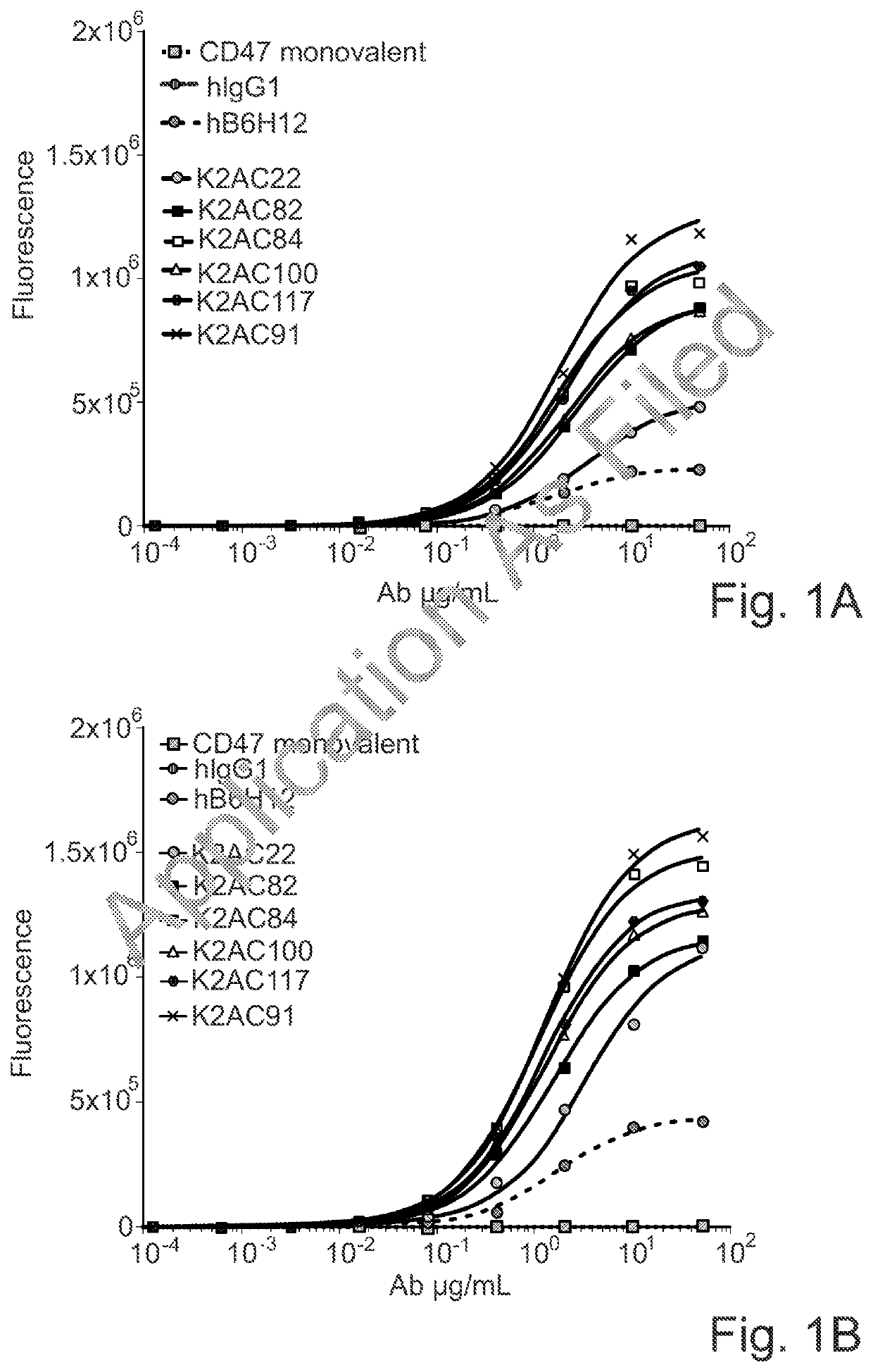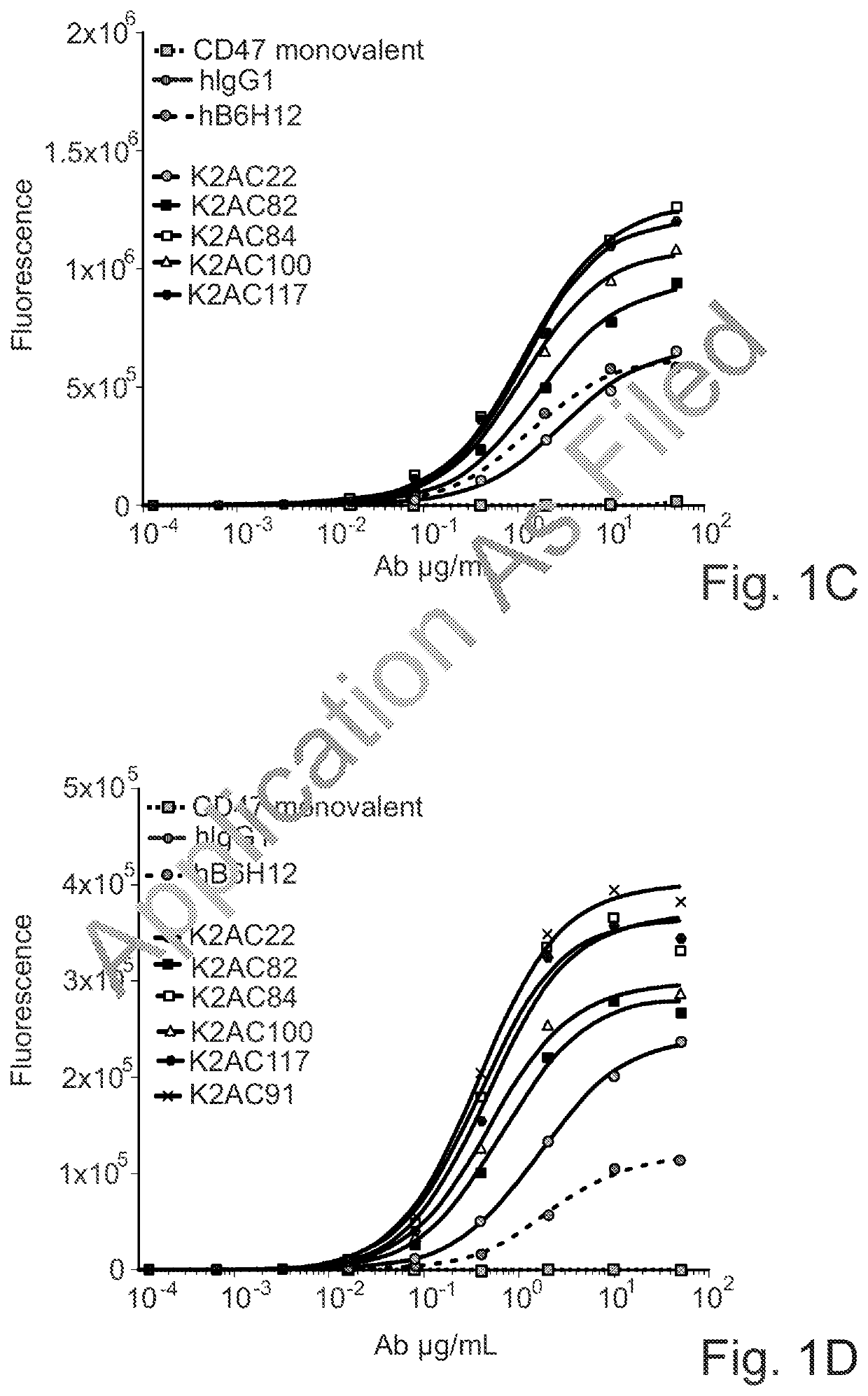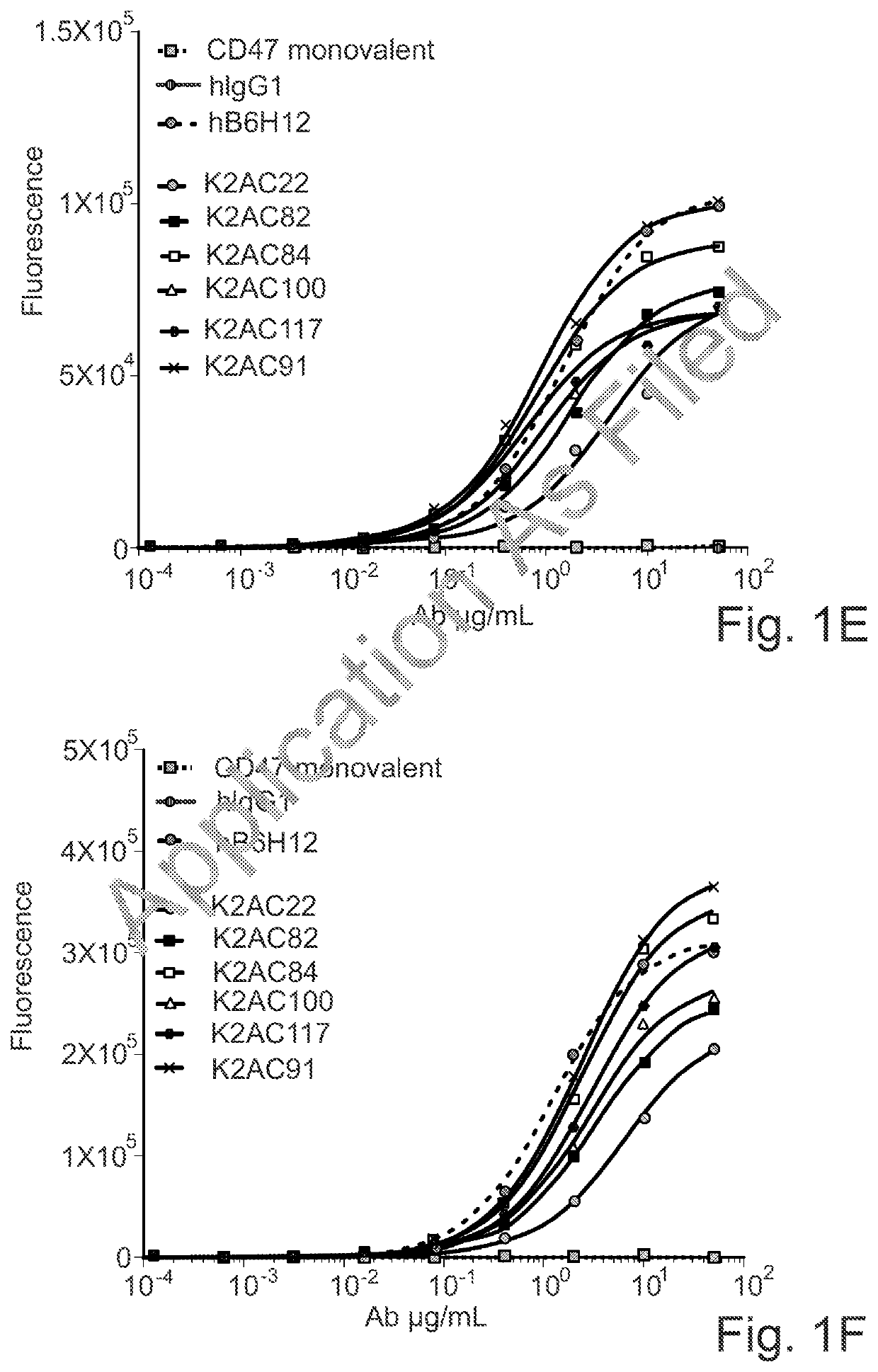Bispecific antibodies against ceacam5 and cd47
a technology of bispecific antibodies and ceacam, which is applied in the field of bispecific antibodies, can solve the problems of pfs and overall survival of patients, lack of cure, and limited treatment options, and achieve the effects of increasing the kd, increasing the phagocytic activity, and reducing the ratio of ceacam3
- Summary
- Abstract
- Description
- Claims
- Application Information
AI Technical Summary
Benefits of technology
Problems solved by technology
Method used
Image
Examples
example 1
Expression and Purification of Human CEACAM5; Source of huCEACAM3 and huCD47
[0273]The sequence corresponding to the complete extracellular domain (ECD) CEACAM5 were subcloned into the pEAK8 mammalian expression vector (Edge Biosystems, Gaithersburg, Md.). The vectors were modified to introduce an Avitag™ (Avidity, Denver Colo.) and a hexa-histidine tag, a human Fc region or a mouse Fc region at the C-terminus. Constructs were verified by DNA sequencing. Purification of recombinant soluble protein was carried out by IMAC (Immobilized Metal Ion Affinity Chromatography), FcXL or CaptureSelect™ IgG-Fc (ms) Affinity Matrix; Human CEACAM3 and biotinylated CEACAM3 are available from ACROBiosystems, Newark USA (Thermo Ffisher Scientific). Human CD47 and biotinylated CD47 can be produced as described in WO2019234576 or are available from ACROBiosystems, Newark USA.
example 2
n and Purification of Bispecific Antibodies Carrying a Lambda and a Kappa Light Chain
[0274]Simultaneous expression can be achieved in different ways such as the transfection of multiple vectors, each expressing one of the chains to be co-expressed, or by using vectors that drive expression of multiple genes. A vector pNovi κHλ was previously generated to allow for the co-expression of one heavy chain, one Kappa light chain and one Lambda light chain as described in US 2012 / 0184716 and WO 2012 / 023053, each of which is hereby incorporated by reference in its entirety. The expression of the three genes is driven by human cytomegalovirus promoters (hCMV) and the vector also contains a glutamine synthetase gene (GS) that enables the selection and establishment of stable cell lines. The VL genes of the anti-hCEACAM5 IgGλ or the anti-hCD47 IgGκ were cloned in the vector pNovi κHλ, for transient expression in mammalian cells. Peak cells or CHO cells are cultured in appropriate Flask with su...
example 3
ement
a) Experimental Procedure to Measure the KD of an Ab to Recombinant Human CEACAM5 (Octet)
[0275]The affinity of the anti-human CEACAM5 arm of the CD47×CEACAM5 bispecific antibodies of the invention for recombinant soluble human CEACAM5 was determined using the Bio-Layer Interferometry (BLI) technology. An OctetRED96 instrument and Protein A biosensors were used (Sartorius). The measurement was performed at 30° C. After hydration, pre-conditioning and a baseline step in Kinetic buffer (PBS, 0.002% Tween 20, 0.01% BSA, Kathon; Sartorius), biosensors were loaded for 5 min with the κλ body at 0.5 μg / mL in Kinetic buffer. Then, biosensors were dipped into a serial dilution of recombinant human CEACAM5 Extra Cellular Domain (ECD) soluble protein (produced in house), starting at 50 nM with a 2× dilution factor. The association and dissociation phases were monitored for 600 seconds each. Biosensors were regenerated using 10 mM glycine pH 1.7. A standard acquisition rate was applied (5.0...
PUM
| Property | Measurement | Unit |
|---|---|---|
| Fraction | aaaaa | aaaaa |
| Fraction | aaaaa | aaaaa |
| Fraction | aaaaa | aaaaa |
Abstract
Description
Claims
Application Information
 Login to View More
Login to View More - R&D
- Intellectual Property
- Life Sciences
- Materials
- Tech Scout
- Unparalleled Data Quality
- Higher Quality Content
- 60% Fewer Hallucinations
Browse by: Latest US Patents, China's latest patents, Technical Efficacy Thesaurus, Application Domain, Technology Topic, Popular Technical Reports.
© 2025 PatSnap. All rights reserved.Legal|Privacy policy|Modern Slavery Act Transparency Statement|Sitemap|About US| Contact US: help@patsnap.com



